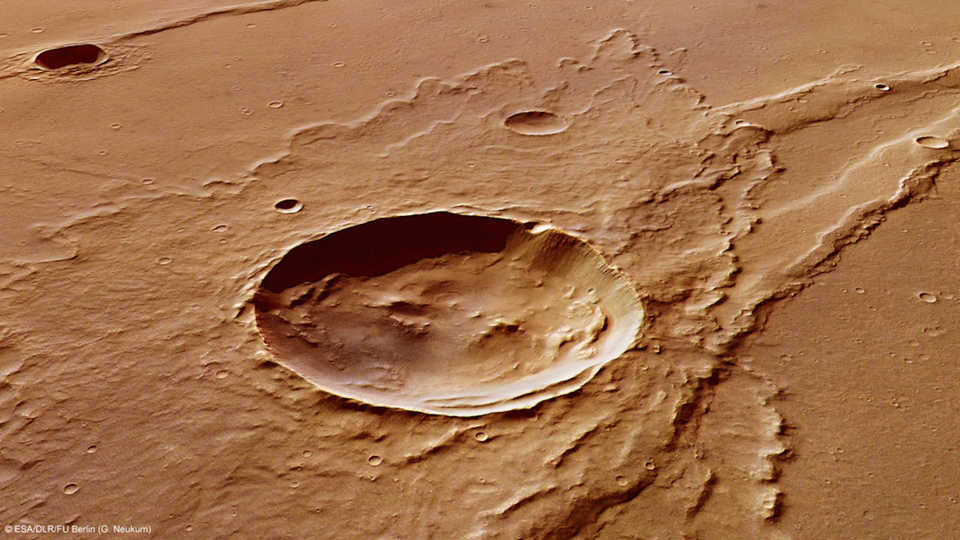Universe Update
Ancient Mars, Water-Rich

Impact Crater Melas Dorsa on Mars
“The overarching question here is about water on Mars and its early history on Mars: Had there ever been an environment that enabled a generation of life on Mars?”
Scientists keep revisiting this question because mounting evidence suggests that Mars was a very wet place long ago, in spite of its current dehydrated state. And the presence of ancient water suggests that life might have existed on the (currently) Red Planet. The overarching question above was posed by Oliver Tschauner of the University of Nevada at Las Vegas, in reference to a recent experiment simulating Earthbound martian meteorites at Lawrence Berkeley National Laboratory’s Advanced Light Source (ALS).
Tschauner and colleagues created a synthetic version of whitlockite, a very rare—at least on Earth—hydrogen-containing mineral, and then simulated the conditions of ejecting meteorites from Mars by blasting the synthetic minerals with metal plates from a gas-pressurized gun at speeds of 1,678 miles per hour. (Ouch!) “You need a very severe impact to accelerate material fast enough to escape the gravitational pull of Mars,” Tschauner says.
At the ALS, researchers used an X-ray beam to study the microscopic structure of shocked whitlockite samples in a technique known as X-ray diffraction. They discovered that whitlockite can become dehydrated from such shocks, forming merrillite, a mineral that is commonly found in Martian meteorites but does not occur naturally on Earth.
Perhaps the “water-poor” merrillite in martian meteorites suggests the prior existence of whitlockite? Whitlockite which was once “water-rich” but dehydrated by impacts in the past? “If even a part of merrillite had been whitlockite before, it changes the water budget of Mars dramatically,” says Tschauner.
“This is important for deducing how much water could have been on Mars, and whether the water was from Mars itself rather than comets or meteorites,” continues Martin Kunz, a staff scientist at ALS who participated in X-ray studies of the shocked whitlockite samples.
Tschauner and team are pursuing another round of studies using infrared light and X-rays at the ALS to study actual Martian meteorite samples this year. But the researchers note that even with more detailed studies of martian meteorites, thermal imaging of Mars taken from orbiters, and rock samples analyzed by rovers traversing the planet’s surface, the best evidence of Mars’s water history would be an actual martian rock taken from the planet and transported back to Earth, intact, for detailed studies.
In order to learn more about the planet’s water history, says Kunz, “It’s really important to get a rock that hasn’t been ‘kicked’” like the Martian meteorites have.
Image: G. Neukum/ESA,DLR, FU Berlin